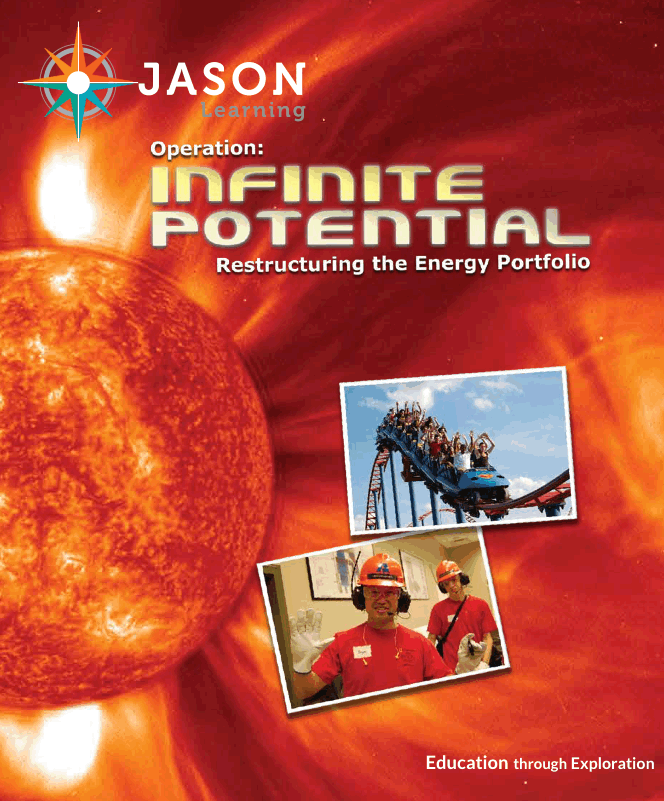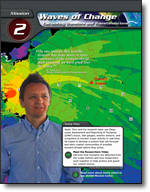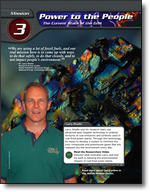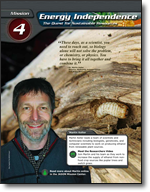Infinite Potential: Energy Types, Transfers, & Efficiency

Students follow the work of STEM professionals to explore the way energy transfers and transforms, the technologies designed to meet the needs of an energy-hungry planet, and the environmental and economic trade-offs inherent in our quest towards sustainability. Activities, videos, and articles engage with students to form foundational content knowledge, with deeper insights into expert applications of energy.
Help students connect with scientists from NOAA, the National Energy Technology Laboratory, Oak Ridge National Laboratory, and National Geographic to:
- Determine whether an earthquake’s energy could transform into a tsunami
- Develop a plan for providing energy to an area struck by a natural disaster
- Propose a plan to responsibly use 400 years of stored coal
- Address a large power outage and work to restore power
- Design an energy-efficient module that will allow humans to live in outer space

Mission 1: Critical Current – Defining Energy
Through hands-on experiments, articles, videos, and games, students learn how STEM role model scientists like NOAA Space Weather Physicist Dr. Janet Green use technology and their understanding of the sun’s energy to explore energy in its may forms. Students will learn the fundamental aspects of forms of energy, and the electromagnetic spectrum.
Target Audience:
Grades 5-12
Examples of Key Vocabulary/Concepts:
Potential & Kinetic energy, visible light, infrared/UV light, radiation, energy transformation
Featured Games:
Infinite Potential- Vocab Challenge- Mission 1

Mission 2: Waves of Change – Calculating Transfers and Transformations
Students meet NOAA Senior Tsunami Modeler Dr. Vasily Titov, who uses DART (Deep-ocean Assessment and Reporting of Tsunamis) buoys, tide gauges, seismic sensors, and computers to monitor ocean activity in order to protect and guard our coastal shores. Through hands-on experiments, articles, videos, and games, students learn how Dr. Titov uses his research to explore how energy is transferred and transformed that happen in predictable ways through waves.
Target Audience:
Grades 5-12
Examples of Key Vocabulary/Concepts:
Systems, Rube Goldberg, waves, electrochemical cells, efficiency, friction
Featured Games:
Coaster Creator, Infinite Potential- Vocab Challenge- Mission 2

Mission 3: Power to the People – The Current State of the Grid
Guided by Dr. Larry Shadle of the National Energy Technology Laboratory, students deepen their understanding of energy and apply it towards investigating how we currently meet our energy and power needs. Students learn about how humankind generates energy that we use to power our energy grid, and current attempts to limit our carbon footprint along the way.
Target Audience:
Grades 5-12
Examples of Key Vocabulary/Concepts:
The Energy Grid, magnets, circuits, fossil fuels, carbon footprint, power plants
Relevant Games:
Infinite Potential- Vocab Challenge- Mission 3

Mission 4: Energy Independence – The Quest for Sustainable Resources
Students join Oak Ridge National Laboratory BioEnergy Science Center Director Martin Keller and his team as they work to increase the supply of ethanol from nonfood crop sources like poplar trees and switchgrass. In this mission, students delve into our energy portfolio to learn about the diverse and promising future of alternative energy resources, and their growing role in combating emissions.
Target Audience:
Grades 5-12
Examples of Key Vocabulary/Concepts:
Energy portfolio, biofuels, advantages and limitations of alternative energy, nuclear fusion, hydrogen gas
Relevant Games:
Infinite Potential- Vocab Challenge- Mission 4

Mission 5: Energy Security – Powering Our Future
Students meet NASA consultant and National Geographic Emerging Explorer Constance Adams, who designs space modules and off world habitats that are energy efficient and functional for the space crews that inhabit them. With her guidance, students follow articles, activities, and interactive games to assess current energy supply/demand, and create a blueprint for a secure energy future.
Target Audience:
Grades 5-12
Examples of Key Vocabulary/Concepts:
Model making, fluid-cooled system, energy conservation, energy efficiency
Relevant Games:
Infinite Potential- Vocab Challenge- Mission 5
Videos
60 minutes of videos introduce teachers and students to some of the world’s top explorers and key science concepts. Our video content is seamlessly woven throughout the curriculum, offering a gateway into the exciting world of exploration and adventure.
Digital Labs and Games
Digital Labs allow students to explore the scientists’ work through interactive online games such as “Coaster Creator,” JASON’s hugely popular Digital Lab exploring potential and kinetic energy.


